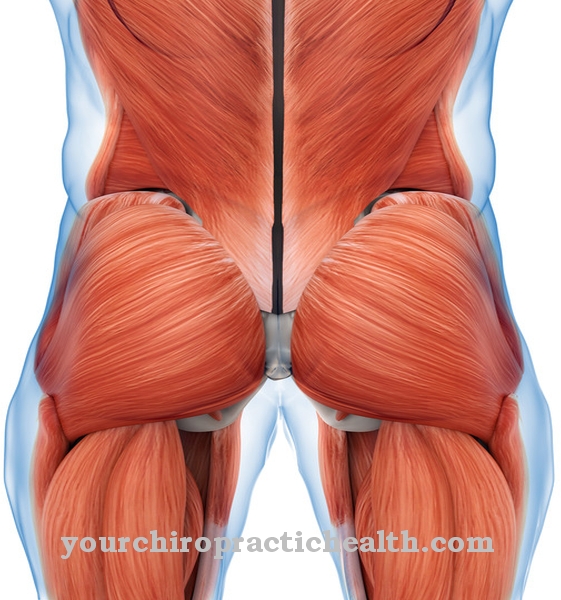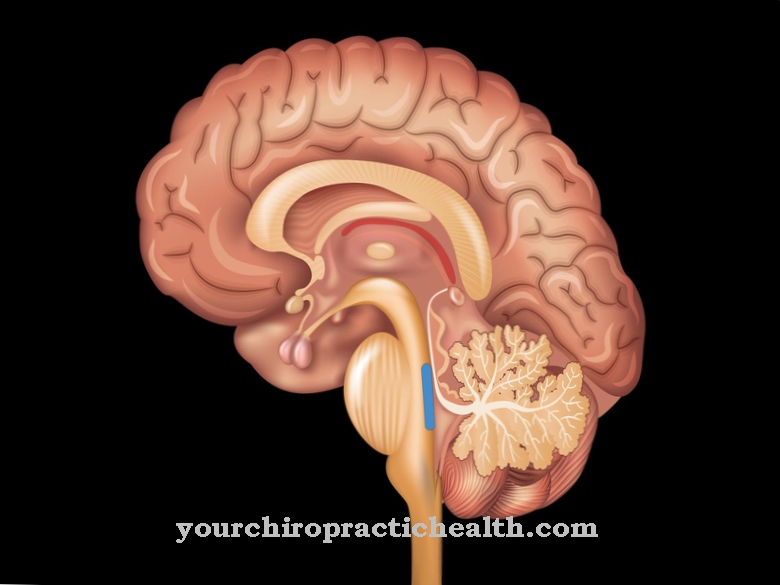The Subiculum is a part of the brain. It is located in the rolled-up bark structure at the end of the hippocampus. It takes on an important role in the learning process.
What is the subiculum?
The subiculum is part of the limbic system and thus the central nervous system. This is responsible for tasks such as emotions.
The hippocampus is located in the limbic system. In addition to the formation of emotions, this is important for learning and memory formation. Most of the hippocampus is located in the inner margin of the temporal lobe. This is also known as the temporal lobe. The subiculum is located in the internal structure of the hippocampus. This connects the hippocampus with the parahippocampal gyrus. The subiculum has an essential role in the learning process and the storage of information in memory. It is considered to be the last instance of information processing in the hippocampus. This creates the basis for creating long-term memories.
In the hippocampus there is a three-layer archicortex. This area is also known as the hippocampal formation. The three layers include the dentate gyrus, Ammon's horn, and subiculum. In the Ammonshorn, for example, the prerequisites for operant conditioning are created. The dentate gyrus is considered to be the most important afferent system in the hippocampus. The subiculum forms the majority of the efferent system.
Anatomy & structure
The hippocampus is on the inside of the temporal lobes. Visually it has the shape of a seahorse without the area of the head. A frontal incision in the lower part of the hippocampus reveals the three layers within it.
This area is curled up like the tail of a seahorse. The structure of the fabric there is called a rolled-up bark structure due to its special characteristics. The microscopic archicortex structure becomes visible along this tissue area. From a developmental point of view, the archicortex is the oldest part of the cerebral cortex. The three layers in the curled area of the hippocampus are the dentate gyrus, the Ammon's horn, and the subiculum.
The subiculum is considered to be the transition area between the hippocampus and the entorhinal cortex. This is the cerebral lobe, which is a transition zone between the archicortex and the neocortex. Most of the efferent fibers of the hippocampus arise from the subiculum. From there they move in the fornix to the mamillary body. The fornix is a fibrous web that connects the hippocampus with the anterior region. The nipple body is a pair of humps and is part of the hypothalamus.
Function & tasks
The subiculum has an essential role in the consolidation of memory contents. This is understood to mean the entire learning process with its individual processes. The information must be transferred from short-term memory to long-term memory so that it is permanently available. This process takes a few days to months until the memories are firmly anchored in the brain.
If it is interrupted, the information learned is incomplete in the long-term memory. Thus the main task of the subiculum is long-term potentiation. This forms the basis of all learning and memory processes. This applies primarily to long-term memories. They include the formation of knowledge in declarative memory. This stores the factual knowledge and all information about experienced events. Spatial orientation is just as important as the content that has been learned. In addition, the prerequisites are created here to consolidate implicit memory contents.
These include habits, automatic courses of action, motor and emotional learning. Since the subiculum forms the majority of the efferent system, most of the information in the hippocampus flows through the dentate gyrus and the subiculum. This region of the hippocampus is believed to be the last before the transition into the enthorial cortex. It thus represents the decisive hierarchical level in the information processing of the hippocampus. The preparations for storing a long-term memory were made in the other regions of the hippocampus. Now it is decided in the subiculum whether it will really remain permanently in the memory or whether it will be dropped again. Factors such as the speed of information transfer between neurons and synapses are just as important as processes of effective learning.
You can find your medication here
➔ Medicines against memory disorders and forgetfulnessDiseases
Lesions of the subiculum lead to immense disturbances in the exchange of information between the neurons and the individual regions in the brain.
The memory consolidation builds on a strand of information and can no longer function adequately if part of the system fails or is impaired. This leads to disturbances in long-term potentiation. The result is memory loss. This usually goes hand in hand with reduced intelligence.
A memory disorder is known in medicine as amnesia. There are two forms of amnesia to be distinguished. They are anterograde and retrograde amnesia. With antero-straight amnesia, new memory formation is no longer possible. The memories that have already been made are completely preserved, but new ones can no longer be formed. Access to memory content that has already been formed is no longer given in retrograde amnesia. Everything that was learned before brain damage has to be relearned, as these memories are no longer available in whole or in part.
The three layers in the hippocampus play an essential role in the formation of memory content. If one of the layers is impaired, this leads to memory loss and problems with long-term memory formation. Since the subiculum is the last instance in long-term potentiation, this is where it ultimately decides whether a memory will be permanently present in the memory.





.jpg)


















.jpg)



